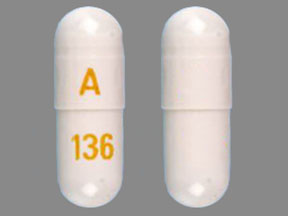Celecoxib Interactions
There are 464 drugs known to interact with celecoxib, along with 9 disease interactions, and 2 alcohol/food interactions. Of the total drug interactions, 75 are major, 385 are moderate, and 4 are minor.
- View all 464 medications that may interact with celecoxib
- View celecoxib alcohol/food interactions (2)
- View celecoxib disease interactions (9)
Most frequently checked interactions
View interaction reports for celecoxib and the medicines listed below.
- Adderall (amphetamine / dextroamphetamine)
- Aspir 81 (aspirin)
- Aspirin Low Strength (aspirin)
- Benadryl (diphenhydramine)
- CoQ10 (ubiquinone)
- Cymbalta (duloxetine)
- Eliquis (apixaban)
- Fish Oil (omega-3 polyunsaturated fatty acids)
- Flexeril (cyclobenzaprine)
- Flonase (fluticasone nasal)
- Jardiance (empagliflozin)
- Lexapro (escitalopram)
- Linzess (linaclotide)
- Lyrica (pregabalin)
- Metoprolol Succinate ER (metoprolol)
- Metoprolol Tartrate (metoprolol)
- Mounjaro (tirzepatide)
- Norco (acetaminophen / hydrocodone)
- Ozempic (semaglutide)
- Paracetamol (acetaminophen)
- Symbicort (budesonide / formoterol)
- Synthroid (levothyroxine)
- Tylenol (acetaminophen)
- Vitamin B12 (cyanocobalamin)
- Vitamin C (ascorbic acid)
- Vitamin D2 (ergocalciferol)
- Vitamin D3 (cholecalciferol)
- Vyvanse (lisdexamfetamine)
- Xanax (alprazolam)
- Zyrtec (cetirizine)
Celecoxib alcohol/food interactions
There are 2 alcohol/food interactions with celecoxib.
Celecoxib disease interactions
There are 9 disease interactions with celecoxib which include:
- asthma
- fluid retention
- GI toxicity
- rash
- renal toxicities
- thrombosis
- anemia
- hepatotoxicity
- hyperkalemia
More about celecoxib
- celecoxib consumer information
- Compare alternatives
- Pricing & coupons
- Reviews (283)
- Drug images
- Side effects
- Dosage information
- Patient tips
- During pregnancy
- Drug class: cox-2 inhibitors
- Breastfeeding
- En español
Related treatment guides
Drug Interaction Classification
| Highly clinically significant. Avoid combinations; the risk of the interaction outweighs the benefit. | |
| Moderately clinically significant. Usually avoid combinations; use it only under special circumstances. | |
| Minimally clinically significant. Minimize risk; assess risk and consider an alternative drug, take steps to circumvent the interaction risk and/or institute a monitoring plan. | |
| No interaction information available. |
See also:
Further information
Always consult your healthcare provider to ensure the information displayed on this page applies to your personal circumstances.


